|
Share this page
|
|
Books and articles
I’ve been a published author since the early 2000s, and I’ve been writing for magazines for even longer. I was the typography correspondent for Desktop in Melbourne between 1996 and 2010. Below is a selection of books, academic articles, and general articles that bear my name. I’ve also included some books that have quoted me over the years. This is not an exhaustive list.
 |
Kumar and Varna (eds.): Nation Branding: Concepts and Country
Perspectives. Hyderabad: ICFAI
University Press 2009.
Contributed a chapter, ‘Poised for Success: the Indian Brand
Prepares Itself for the 21st Century’, on how India, above many
other countries, has the right ideas for its nation brand. |
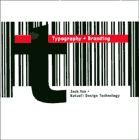 |
Yan: Typography
and Branding. Christchurch: Natcoll Publishing 2004.
Created with Natcoll in Christchurch, New Zealand. Finally published
in November 2004, with a lot of my 2002 material. Fortunately, the
ideas have stayed current, and there’s a lot of post-9-11 inspiration
inside this title.
|
 |
Yan: View Point Series 1 of 4: User Seductive—Perspectives
on 21st Century Branding. Wellington: Charlie Ward and Wai-te-Ata
Press, Victoria University of Wellington 2004.
This was a pleasure to work on. Charlie Ward is a talented young Irish
designer who came to me with a book proposal, with a series of four
books, each of which would be printed privately and in limited numbers.
I wrote the first; Kevin Roberts the second. Charlie (and Barbara
Schmelzer, and photographer Jono Rotman) has more than done the remainder
justice with a startlingly stunning work. Nominated for a Best Design
Award in New Zealand in 2004.
|
 |
Das (ed.): New
Age Branding: Concepts and Cases, Vol. 1. Hyderabad: ICFAI University Press 2003.
I contributed one case to this marketing course book, ‘The
brand attitudes of automobiles’, which I originally wrote
for CAP in 2002. |
 |
Ind (ed.): Beyond
Branding: How the New Values of Transparency and Integrity Are Reshaping
the World of Brands. London: Kogan Page 2003.
Beyond Branding, to be published in autumn 2003, challenges
business to adapt to a world of transparency. My fellow authors and
I argue that business has to have a human perspective so that it benefits
people rather than manipulates. Visit the site at www.beyond-branding.com,
co-designed by me and developed by Johnnie Moore. The book went into
its second printing in 2004 and went paperback in May 2005.
|
Academic articles
J. Yan: ‘ The components of digital branding and their effects on brand equity’, Journal of Digital and Social Media Marketing, vol. 1, 2013
Appearing in volume 1 of a new peer-reviewed journal where I look at how brands can be managed in a social media setting. I was very proud of this because it was the first piece I had authored that required next to no changes from my reviewers.
J. Yan: ‘Social media in branding: fulfilling a need’, The Journal
of Brand Management, vol. 18, no. 9, 2011, pp. 688–96.
I discuss how social media impact on
branding and brand equity.
J. Yan: ‘Branding and the international community’, The Journal
of Brand Management, vol. 10, no. 6, 2003, pp. 447–57.
The relevance of the international community and the shortcomings in the
nation branding of the United States.
J. Yan: ‘Corporate responsibility and the brands of tomorrow’, The
Journal of Brand Management, vol. 10, nos. 4–5, 2003, pp. 290–302.
Dealing with the future of corporate social responsibility.
J. Yan: ‘Online branding: an antipodean experience’, Human Society
and the Internet. Berlin: Springer-Verlag 2001.
From conference proceedings, a paper on how the digital divide is being
bridged and early success stories.
Related articles can be found at The
Journal of the Medinge Group.
Books I’ve been quoted or referenced in
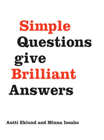 |
Eklund and Isoaho: Simple
Questions Give Brilliant Answers. Helsinki: SQBA 2010.
A wonderful book filled with quotations on leadership, including contributions
from yours truly. I was asked to contribute by my friend Prof Antti
Eklund, the acclaimed Finnish architect, designer and brand management
consultant. |
 |
Seib (ed.): New
Media and the New Middle East. New York: Palgrave Macmillan
2009.
My ‘Branding and the International Community’ paper for
the Journal of Brand Management was also cited in this volume
on new media. |
 |
Ip (ed.): The
Dragon and the Taniwha: Māori and Chinese in New Zealand.
Auckland: Auckland University Press 2009.
Briefly mentioned in relation to Māori intellectual property
rights. |
 |
Levy and Shastry: Happy
about Knowing What to Expect in 2009. Cupertino, Calif.: Happy
About 2009.
More predictions, though for now, this was my last contribution
to Happy about. |
 |
Hedinger and Vonderau (eds.): Films
that Work: Industrial Film and the Productivity of Media. Amsterdam: Amsterdam University Press 2009.
One of my earlier papers on branding and the international community,
covering the reality of nation branding and politics after 9-11, cited. |
 |
Jaffe and Nebenzahl: Made
in …. Milano: Baldini Castoldi Dalai editore 2008.
A translated, Italian edition of Eugene and Israel’s book on
place branding and the country-of-origin effect, in which I am thanked.
|
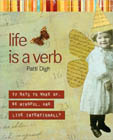 |
Digh: Life
Is a Verb: 37 Days to Wake Up, Be Mindful, and Live Intentionally.
Charlotte, NC: Skirt 2008.
I helped out my friend Patti Digh with a quotation for her book on
positive thinking. |
 |
Alba and Stay: I’m
on Facebook: Now What?. Cupertino, Calif.: Happy
About 2008.
Tips on how to get the most for your company through being on Facebook.
|
 |
Dinnie: Nation
Branding: Concepts, Issues, Practice. Oxford: Butterworth
Heinemann 2008.
It was very kind of Keith Dinnie to include my viewpoints on nation
branding in his definitive work on the subject. This is easily one
of the best books on nation branding out there. |
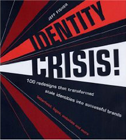 |
Fisher: Identity
Crisis: 50 Redesigns that Transformed Stale Identities into Successful
Brands. Cincinnati, Ohio 2007.
Jeff Fisher quotes me talking about the importance of the ‘soul’
of a business to a brand.
|
 |
Levy: Happy
about Knowing What to Expect in 2007. Cupertino, Calif.: Happy
About 2007.
I am pretty sure I was in 2006’s as well, but never mind,
I am in 2007’s, with half a dozen predictions. Mitchell reckons
the accuracy rate is down to around 85 per cent now, but that is still
better than hit-and-miss. Darn it, I left out the iPodPhone, but there’s
always next year. |
 |
Jaffe and Nebenzahl: National
Image and Competitive Advantage: the Theory and Practice of Place
Branding, 2nd ed. København: Copenhagen Business School
Press 2006.
Eugene and Israel follow up their successful book on national image
and expand the chapters slightly to include nation branding.
|
 |
Schultz, Antorini and Csaba (eds.): Corporate
Branding: Purpose/People/Process. København: Copenhagen
Business School Press 2005.
I provide a brief quotation on nation branding, and countries
competing against one another. |
 |
Levy: Happy
about Knowing What to Expect in 2005: Predictions from Over 50 Executives.
Cupertino, Calif.: Happy About 2005.
I was asked to make a lot of predictions for business books in
2005, and this book is another example. Mitchell Levy is a heck of
a nice guy, too, and created some positive ideas to help executives
for the year ahead. The jury’s still out on my positive prediction,
but apparently Mitchell’s selectiveness earns him a 90 per cent
accuracy in his books. |
 |
Myers and Kent: The
New Consumers: the Influence of Affluence on the Environment. Washington, DC: Island Press 2004.
This was obviously the original book that Norman Myers and Jennifer
Kent wrote before it turned into an Italian edition—though I
learned of the European one first. The challenge, as they put it:
‘how to make fashion sustainable and sustainability fashionable?’
I like to think we have started on that course and encouraged other
fashion magazines to do the same.
|
 |
Myers and Kent: I
nuovi consumatori: paesi emergenti tra consumo e sostenibilità. Milano: Edizioni Ambiente 2004.
Norman Myers and Jennifer Kent’s book on new consumers show
how they care about corporate social responsibility. They cite me
and my decision to make Lucire the first fashion industry partner of the United
Nations Environment Programme as an example.
|
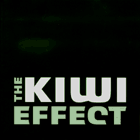 |
Green and Campbell: The Kiwi Effect. Wellington 2004.
It’s hip to be square. Lawrence Green and Jenny Campbell have
done something admirable: found out what makes successful New Zealand
business people tick. I was honoured that Lawrence approached me as
an interviewee and flattered I made it into so many chapters. DNA
Design did the cover—and a marvellous job of it, too. Check out
Lawrence’s company here;
and Jenny’s one here.
|
 |
Postrel: The
Substance of Style: How the Rise of Æsthetic Value Is Remaking
Commerce, Culture, and Consciousness. New York: HarperCollins
2003.
Style affects our choices more than we think, posits Virginia Postrel.
I haven’t bought this yet, but it’s an interesting thesis,
and I noticed I’m a footnote in it from my days helping out Visual
Arts Trends.
|
 |
Earls: Designing
Typefaces: Insight. East Sussex: Rotovision 2002.
The author, the editor of Typographer.com, had asked me for comments
on the topic of intellectual property protection for typefaces. I’ll
be checking this one out, to be sure.
|
 |
Jaffe and Nebenzahl: National
Image and Competitive Advantage. København: Copenhagen Business
School Press 2001.
My colleagues Eugene Jaffe and Israel Nebenzahl, arguably the world’s
leading authors on country-of-origin effect, with the definitive
book on the subject. A pleasure to have lent a hand to these two
distinguished scholars.
|
 |
Sebastian: Digital
Design Business Practices, 3rd. ed. New York: Allworth Press
2001.
One of the most comprehensive books covering design principles and
the rights of those involved in the publishing industry. The earlier
editions came with an excellent reputation. The third edition of
this book, which includes chapters on web strategy, design and running
a practice, sees me quoted.
|
Selected papers
Gilboa: ‘Public
Diplomacy: the Missing Component in Israel’s Foreign Policy’, Israel Affairs, October 2006, pp. 715–47.
It’s quite an honour to be cited by someone as well respected as
Prof Eytan Gilboa on branding and the international community. The paper
itself, on Israel’s national image and its 21st century deterioration,
makes for interesting reading.
Macrae: Brand
Transparency. Washington: Institute
of Brand Leadership 2002.
Chris Macrae’s excellent collection of writings about brand transparency,
edited by Dannielle Blumenthal, is one of the best in getting us to question
dogma and convention, breaking through the business world’s conditioning
and its use of falsehoods in the process. I appear in it once and am honoured
to be amongst such illustrious company. Hop over to Valuetrue.com and learn more about Chris’s initiatives.
General articles
‘New dawn’, Eye, issue 79, 2011
I examine the future of type on the web, including the origins of the font-face code and current standards
‘My best year: Jack Yan, 1990’, The Dominion Post,
January 1, 2007, p. C1
A full page in a Fairfax paper—a humorous look back at 1990 and my
final high school year.
‘Grunge is back—just not here’, Desktop, August
2006
In the 1990s, I wrote a lot about how I disliked grunge typography. Now,
I am almost looking at the trend romantically, as I examine magazines
from Thailand, the UAE and Finland.
‘The China syndrome’, Desktop, July 2006
The two competing styles of Chinese type—traditional versus simplified—create
controversy and chatter. I trace the origins of the two styles and just
what the hassles are. My 10th anniversary piece for the magazine (June
was bumped), following some
discussion on my blog.
‘Thoughts in a V8’, Lucire, vol. 2, no. 5, April
2006, p. 104
I wrote this parody of a James Bond novel as a short article in Lucire,
testing the Aston Martin V8 Vantage.
‘On MG Rover, the Chinese haven’t been that smart, either’, The National Business Review, online edition, April 9, 2005
On the collapse of British automaker MG Rover. Most of the British press
lay blame at the British executives, with next to no media willing to
criticize the Politburo’s part in the collapse. But some things needed
airing. This was carried by numerous blogs during that week.
‘Starting the axis of good’, CAP Online, December
5, 2004
Nothing much has changed, and even al-Qaeda can be seen as a brand, especially
its use of virtual techniques. Why not use the same ideas for good?
‘Branding 2010’, Agenda, no. 13, June 2003, pp. 4–5
The future of branding and the formation of a “brand manifesto” to counter
the negativity of Naomi Klein’s No Logo.
‘Between the Gibson Sheats: a law firm rebrands’, Allaboutbranding.com,
March 2003
Written in June 2001 originally for another publication, this paper eventually
was published 18 months later by Allaboutbranding.com. This case study
analyses the rebranding for a law firm and how DNA Design went far further
in both differentiation and finding Gibson Sheat’s “soul”
‘Customers have brains, too’, Headway, vol. 26, no.
1, autumn 2003
A column on fashion—my first for this magazine—on how companies
that respect consumers’ intelligence and freedom, such as Dunedin,
New Zealand’s Mild Red, deserve to do well in the autumn–winter
season
‘The brand manifesto’, CAP Online, September 9, 2002
Summarizing the Medinge conference on branding and what can be expected
from the industry as it rescues commerce from its current mess. (Republished
in Allaboutbranding.com.)
‘Type on TV’, Desktop, September 2002
A primer on how type on television works, at Sweden’s TV4 network.
‘The states of play’, Desktop, March 2002
In-depth article on the Australian type industry.
‘The brand attitude of automobiles’, CAP Online,
March 16, 2002
Brand equity is not why the Toyota Corolla is more successful than the
Chevrolet Prizm. Anecdotal evidence that some automobile brands have matured
into extendable attitudes conducive to their survival while others remain
fixed in narrow, product-reliant niches. (Republished in Allaboutbranding.com as ‘The
brand attitudes of automobiles’ and by the Institute
of Chartered Financial Analysts of India as the cover story for its
digest, Marketing
Mastermind, February 2003.)
‘Fighting globalization with globalization’, CAP Online, February
21, 2002
An article discussing globalization and fulfilling its promise to move
workers to higher-gain jobs. (Republished in Allaboutbranding.com.)
‘Nations that listen’, Agenda, no. 12, first quarter 2002
A discussion of how firms could get more global after 9-11 for the Australian
Graphic Design Association.
‘Branding in the early 2000s: the new forces at work’, CAP
Online, December 11, 2001
As a new world economy emerges with governments being more cooperative
after September 11, 2001, I examine how branding might look in the next
few years—and how they might be remembered. One conclusion: Chinese WTO
entry won’t change branding, though Swedish business and the Nordic
school will. (Republished in Allaboutbranding.com.)
‘Welcome back Harper’s Bazaar’, Visual Arts Trends, November
2001
With Kate Betts fired and a new editor in place, I look back on the typographic
and business prophecies in my April 2000 article.
‘Brands transcend economics (and The Economist)’, CAP Online, September 25, 2001
In response to an article in The Economist, I point out the shortcomings
in the British publication’s analysis. The Economist’s article
was notable for the points it raises from other leading commentators,
including Wally Olins, that follow my predictions for the industry made
above. Again prophetic in light of later events at Enron, WorldCom and
President Bush’s call for corporate responsibility.
‘The moral globalist’, CAP Online, May 2, 2001
Originally destined for the print edition, but later placed online, how
the good in globalization could be properly realized.
‘The attitude of identity’, Desktop, October 2000
Unparalleled access to corporate identity guru Wally Olins in my examination
of his latest theories on branding.
‘The business of identity’, CAP, volume 4, no. 3, spring 2000
A full summary of my study into identity and business performance. (Republished
in Allaboutbranding.com.)
‘Ringing in the DIN of a few Bazaar changes’, Visual Arts
Trends, April 2000
Article criticizing the Harper’s Bazaar rebrand—prophetic in light
of the sackings of that magazine’s editor and the departure of its art
director.
‘Those nostalgic 1990s’, Desktop, May 1999
A retrospective examination on what the 1990s will be remembered for.
Leading commentators were interviewed and their responses analysed.
‘The identity business’, Desktop, April 1999
My ground-breaking study is detailed for the first time in Australia,
linking brands to an organization’s business performance, including its
bottom line.
‘Generation Xperts’, Desktop, September 1998
Generation X designers’ trends, awareness of market positioning and other
factors are examined to see whether anything marked out the 20-something
design professional.
‘Inspirational type’, Desktop, April 1998
Australian designers are interviewed to see whether there is an Australian
design vernacular.
‘The non-conformists’, Desktop, February 1998
Non-conformists in the type design industry including Zuzana Licko and
Erik van Blokland.
‘Mile high type’, Desktop, November 1997
Airline identities and brands examined, including the controversial British
Airways rebranding.
‘Beyond modernism’, Desktop, September 1996
Postmodernism in international corporate identity and branding examined.
‘Nicole? Papa!’, CAP, autumn 1995
Discussing the highly successful “Nicole? Papa!” campaign which used national
branding notions about France.
|